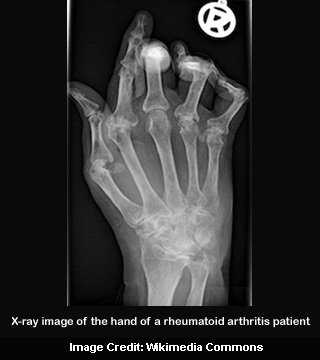
Currently, scientists and clinicians at the Broad Institute of MIT and Harvard, and Brigham and Women’s Hospital along with an international team seem to have extended the hunt, finding three novel genetic risk factors for the disease. They also appear to have recognized four more that look like promising targets for further study.
For reasons that science has yet to completely understand, cells that normally destroy foreign invaders like bacteria may perhaps turn on the body itself. Apparently, this in turn causes inflammatory arthritis and erodes the delicate machinery that keeps joints flexible.
However the body also seems to hold tempting clues nestled inside the DNA of each cell. In the 1970s, scientists were believed to have discovered the first genetic risk factor for rheumatoid arthritis. Furthermore, a second risk factor was noted to have been recognized in 2003. Also, genome-wide studies appear to have found a variety of others since then.
For the purpose of the study, the authors were believed to have brought a powerful weapon to the hunt namely a computer program called GRAIL. Also, this program seems to have allowed them to rapidly comb through nearly three decades’ worth of scientific literature on PubMed. PubMed appears to be a free digital archive maintained by the National Institutes of Health since the 1960s.
Similar to Google, GRAIL may be able to harness the power of computer algorithms to examine through a huge array of text. In this case, the program seems to have analyzed 250,000 published abstracts, or summaries, of studies on genes in humans and in other organisms such as the mouse.
“With GRAIL, you can take a list of genes and use the wealth of published literature and mine it for a common thread. GRAIL is fast and objective. There are 20,000 genes in the human genome, and none of us is an expert on all 20,000. GRAIL helps you parse the list really quickly and come up with promising candidates that you can then focus your attention on. It’s a way to focus one’s intellectual resources,” says first author, Soumya Raychaudhuri, a postdoctoral researcher at the Broad Institute who developed the program.
Hardier than any pair of human eyes, Gene Relationships Across Implicated Loci (GRAIL) could scan study abstracts for references to regions of the genome suspected to play a role in rheumatoid arthritis. It further seems to compare these with previously established risk factors. Supposedly, the short list of new candidates can then be confirmed in laboratory studies.
Raychaudhuri along with his colleagues was noted to have made use of GRAIL to analyze studies that uncovered single ‘letter’ variations in the genome from 179 regions of the genome thought to influence risk. Apparently, these variations in the genome were called as single-nucleotide polymorphisms (SNPs). GRAIL appears to have given each region a score, based on its relationships to genes in 16 regions that are already known to be associated with rheumatoid arthritis.
Twenty-two of these SNPs looked promising, thus the scientists were noted to have examined them in samples from thousands of patients with and without rheumatoid arthritis. Of the 22, the analysis found nearly three latest risk factors for rheumatoid arthritis, and approximately four more that look like promising targets for further study.
Many of these variants appear to have been in or near regions of the genome already associated with autoimmune diseases, such as lupus erythematosus, celiac disease, and type 1 diabetes.
“These SNP associations continue to clarify critical biological processes involved in RA pathogenesis,” the authors wrote, including the deployment of the immune system’s most important ‘soldiers,’ i.e. T-cells and B-cells.
“It really helped us take a long list of potential genetic variants and focus in on a small number of them … to see if these are true rheumatoid arthritis risk alleles, or not. It allowed us to disregard a lot of things that we didn’t think would be important and to focus on those that had a higher chance of being important,” says co-author, Robert Plenge, assistant professor at Harvard Medical School and director of genetics and genomics in the Division of Rheumatology, Immunology and Allergy at Brigham and Women’s Hospital.
Though the scientists note that GRAIL seems to be limited because it relies on the descriptions in already published literature, they hope it will assist in defining the biological pathways involved in rheumatoid arthritis.
One of the big challenges for technologies like GRAIL apparently is to get it to move beyond the abstracts and get to the full text. That’s one of the long-term goals of these authors. However, the hope of all of this is that it will help them figure out what the key pathways are that seem to predispose people to disease. And hopefully with that, they’ll be able to identify drugs that are effective.
The findings of the study have been published in the journal, Nature Genetics.
